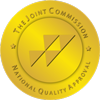Most people who hear the term methamphetamine almost immediately have the word “illegal substance” in their mind, and with good reason. Methamphetamine, or meth as it is more commonly called, is a potent central nervous system stimulant, or drug that increases the activity of the central nervous system, and the entire body as well.
Stimulants are perhaps more popularly known as illegal performance enhancers, used to enhance attention, alertness, and to a small extent, stamina. These substances are also known to curb a person’s appetite for food, deal with chronic sleepiness, and alleviate nasal congestion issues.
As a stimulant, what makes meth addictive is its ability to produce sensations of euphoria alongside its other effects, making a person feel “so alive” while on it. As with every other illegal substance, however, using it comes with consequences, not the least of which is the fact that it is quite difficult to quit.
When Was Meth First Used?
There are several accounts of when and who first developed the highly potent substance known as methamphetamine, otherwise known as meth. Some of the more popular accounts say it was first synthesized by Japanese scientist Nagai Nagayoshi in 1893 and later refined by another Japanese scientist named Akira Ogata in 1919 to its current crystallized form.
Another account states that the primary substance amphetamine, from which methamphetamine is derived, was synthesized by a Romanian chemist named Lazar Edeleanu in 1887.
It wasn’t until the late 1920s that meth started getting real attention from the scientific community, when American chemist Gordon Alles, who was looking for an alternative to the drug ephedrine, had himself injected with amphetamine. Alles late,r on developed Benzedrine, a drug that was initially used to treat narcolepsy and cases of mild depression.
Whichever origin account people subscribe more to, methamphetamine rose to prominence during World War II, as American, British, German, and Japanese soldiers were given amphetamine, dextroamphetamine, and methamphetamine to enhance their stamina and tolerance to the various psychological traumas of war. It would later become apparent that due to the neurological effects of methamphetamine, it was highly addictive.
Japanese pilots were believed to have been ordered to take large doses of meth tablets just before suicide missions, while German fighter pilots and infrantry men were given meth mixed with cocaine to not only keep them awake and “on-edge”, but to also dull the pain of whatever injury they sustained during battle.
Methamphetamine became a popular recreational drug during the 1950s, and throughout the 1960s and 1970s, it was the drug of choice for truck drivers, college students, athletes, and motorcycle gangs. In an attempt to curb the popular use of meth, the US federal government started regulating the chemical ingredients used to make meth, which prompted those still manufacturing meth to use the ephedrine content from over-the-counter medications to create crystal meth.
What Are the Signs That Someone is Using Crystal Meth?
There are substances that some people use that unless they are subjected to a drug test, will not become overtly obvious. Crystal meth is not one of them. Methamphetamine exerts a profound effect on both the psychological and physical aspects of the body and hiding its usage is next to impossible.
The nature of methamphetamine’s effect creates an immediate effect on the person so that someone who was once shy, timid, seemingly sluggish, or not particularly active will suddenly become the life of any event, exhibiting confidence, loquaciousness, and a willingness to participate in anything where they could display skill and knowledge in.
For those who have been using for longer periods, some of the more severe telltale signs of meth use may manifest, with most of these signs making it apparent that whatever change the person is going through might not exactly be for the best.
Some signs that might suggest meth use include:
- Hyperactivity
- Twitches, facial tics, jerky movements
- Paranoia
- Dilated pupils
- Sudden and significant weight loss
- Skin sores
- Rapid eye movements
- Agitation
- Disrupted sleep patterns
- Sudden emotional outbursts
- Impaired health
- Lesions and burn-like wounds
- Anxiety
Depending upon the severity of the symptoms, the natural threshold of the person, and current metabolic rate, these signs could last anywhere from 3 to 15 days, or even for as long as the person continues to use meth. The manifestation of weight loss could be so severe that the person begins to look malnourished at some point.
What Are the Effects Of Meth Use?
Being a substance that affects the central nervous system directly, methamphetamine produces significant health effects that encompass both short-term and long-term ranges. The long-term effects tend to be degenerative, often leaving the body with scars, marks, or in the case of dental health, rotting effects.
More than just the physical effects, meth use also leaves profound psychological and behavioral effects that tend to stay for quite some time even after detoxification from meth, although they do fade over time throughout rehabilitation.
Short-term effects of meth use include:
- Elevated body temperature
- Elevated blood pressure
- Hyperventilation
- Arrhythmia (irregular heart rate)
- Loss of appetite
- Disrupted sleep patterns
- Nausea
- Irritation
- Aggression
- Belligerence
The more damaging long-term effects of meth use include:
- Increased chance of permanent brain damage
- Heightened risk of heart disease
- Elevated blood pressure
- Complications from chronically elevated blood pressure
- Damage to liver
- Damage to kidney
- Damage to lungs
- Anxiety
- Confusion
- Insomnia
- Paranoia
- Hallucinations
- Mood swings
- Delusions
- Belligerence
- Chronic psychosis
- Skin sores
- Premature osteoporosis
- Severe dental health issues
- Compromised immune system
- Depression (following “meth crash” or when the high effect ends)
- Seizures
- Heightened chance of sudden cardiac arrest
- Reproductive system issues
- Malnutrition
- Birth defects (if pregnant)
- Anhedonia (inability to feel pleasure)
- Impaired cognition
- Memory loss
It is important to note that as meth usage has both short-term and long-term effects, it needs to be emphasized that any amount of meth use brings a measure of damage already. Being a substance that directly affects and stimulates the central nervous system, it is almost a guarantee that even a few furtive tries of meth usage will inevitably lead to a substance abuse disorder.
What Is A Meth Crash?
As with any other drug or substance used, the high that a person gets from using meth eventually fades. When the high and euphoric effect of meth dissipates, most people experience what is known as a meth crash or comedown, where the dissipation of the high effect brings on feelingsing dysphoric (severely unhappy), depression and anxiety, agitation, etc.
Practically everyone who uses meth goes through this, and some, in an attempt to stave off the crash, binge on meth, using more than their usual amount, in the mistaken belief that it will prevent a crash. What people fail to understand is that binging on meth will do nothing to prevent the crash, and instead actually hasten it and only intensify the symptoms. On top of that, binging on meth will also aggravate the damage already done to the body from chronic meth use.
People who binge on meth reportedly also suffer more severe withdrawal symptoms once they are in detox. These people also tend to experience longer bouts of withdrawal symptoms, some lasting for weeks at a time.
People undergoing a meth crash or comedown tend to experience the following symptoms:
- Fatigue
- Hunger
- Impaired concentration
- Inability to focus
- Severe cravings for meth
- Depression
- Sluggishness
- Bradycardia
- Paranoia
- Psychosis
- Disruption of sleep patterns
- Insomnia
- Suicidal tendencies
- Non-specific aches and pains
- Long periods of sleep (if able to sleep, up to three days at a time)
An added risk of a meth crash or comedown is the fact that some try to mitigate the severe symptoms by taking other substances to deal with some of the symptoms, such as sleeping pills, anti-anxiety pills, and the like. As meth users have become immensely accustomed to taking substances, there is an increased likelihood that those who do practice this form of symptom mitigation will also develop a dependence on any other substance they use.
How Long is the Comedown Period for Meth?
The severe symptoms that occur during a meth comedown tend to set in within hours after the last use. The duration will typically depend upon the person’s current health, tolerance, and threshold, as different people tend to experience it differently. Some factors that may affect duration include:
- Amount of meth the person has been using
- Amount of time that the person has been using meth
- A predisposition towards severity and duration of withdrawal symptoms in general
- Simultaneous use of other substances
- Current health during comedown period
Find Your Way Back to Recovery With Sana Lake
We here at Sana Lake understand how debilitating and damaging severe substance abuse disorders could be, and this has helped us shape our culture to be one of true care and concern for one’s recovery.
We don’t believe in giving false hope. We will tell you how difficult it will be, and how much work will go into your recovery. We will, however, be with you every step of the way, and will do our best to make each step the right one. Contact us today to get started.



